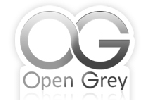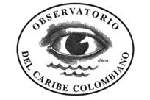UML @ Classroom [electronic resource] : An Introduction to Object-Oriented Modeling / by Martina Seidl, Marion Scholz, Christian Huemer, Gerti Kappel.
By: Seidl, Martina [autor.].
Contributor(s): Scholz, Marion [autor.] | Huemer, Christian [autor.] | Kappel, Gerti [autor.] | SpringerLink (Online service).
Material type: BookSeries: Copyright date: Cham : : Springer International Publishing : : Imprint: Springer,, 2015Publisher: 2015Description: XII, 206 p. : online resource.Content type: texto Media type: computador Carrier type: recurso en líneaISBN: 9783319127422.Subject(s): Ciencias de la computación | Ingeniería de software | Sistemas de administración de información | Ciencias de la computación | Ingeniería de software | Administración de computadores y sistemas de informaciónDDC classification: 005.1 Online resources: <img src="/screens/gifs/go4.gif" alt="Go button" border="0" width="21" height="21" hspace="7" align=middle"> Vea este libro electrónico
BookSeries: Copyright date: Cham : : Springer International Publishing : : Imprint: Springer,, 2015Publisher: 2015Description: XII, 206 p. : online resource.Content type: texto Media type: computador Carrier type: recurso en líneaISBN: 9783319127422.Subject(s): Ciencias de la computación | Ingeniería de software | Sistemas de administración de información | Ciencias de la computación | Ingeniería de software | Administración de computadores y sistemas de informaciónDDC classification: 005.1 Online resources: <img src="/screens/gifs/go4.gif" alt="Go button" border="0" width="21" height="21" hspace="7" align=middle"> Vea este libro electrónico | Item type | Current location | Call number | Status | Date due | Barcode |
|---|---|---|---|---|---|
 Libros electrónicos
Libros electrónicos
|
005.1 S458 (Browse shelf) | Available |
Browsing Cartagena Shelves Close shelf browser

|

|

|

|

|

|

|
||
| 004.678 R266 Internet of Things from hype to reality | 005.072 D457 Design research in information systems | 005.1 O661 Concise Guide to Software Engineering | 005.1 S458 UML @ Classroom | 005.1 S628 The algorithm design manual | 005.11 D233 Object-oriented analysis, design and implementation | 005.11 L111 Guide to Competitive Programming |
Incluye referencias bibliográficas e índice.
1 Introduction -- 2 A Short Tour of UML -- 3 The Use Case Diagram -- 4 The Class Diagram -- 5 The State Machine Diagram -- 6 The Sequence Diagram -- 7 The Activity Diagram -- 8 All Together Now -- 9 Further Topics.
This textbook mainly addresses beginners and readers with a basic knowledge of object-oriented programming languages like Java or C#, but with little or no modeling or software engineering experience – thus reflecting the majority of students in introductory courses at universities. Using UML, it introduces basic modeling concepts in a highly precise manner, while refraining from the interpretation of rare special cases. After a brief explanation of why modeling is an indispensable part of software development, the authors introduce the individual diagram types of UML (the class and object diagram, the sequence diagram, the state machine diagram, the activity diagram, and the use case diagram), as well as their interrelationships, in a step-by-step manner. The topics covered include not only the syntax and the semantics of the individual language elements, but also pragmatic aspects, i.e., how to use them wisely at various stages in the software development process. To this end, the work is complemented with examples that were carefully selected for their educational and illustrative value. Overall, the book provides a solid foundation and deeper understanding of the most important object-oriented modeling concepts and their application in software development. An additional website offers a complete set of slides to aid in teaching the contents of the book, exercises and further e-learning material.












